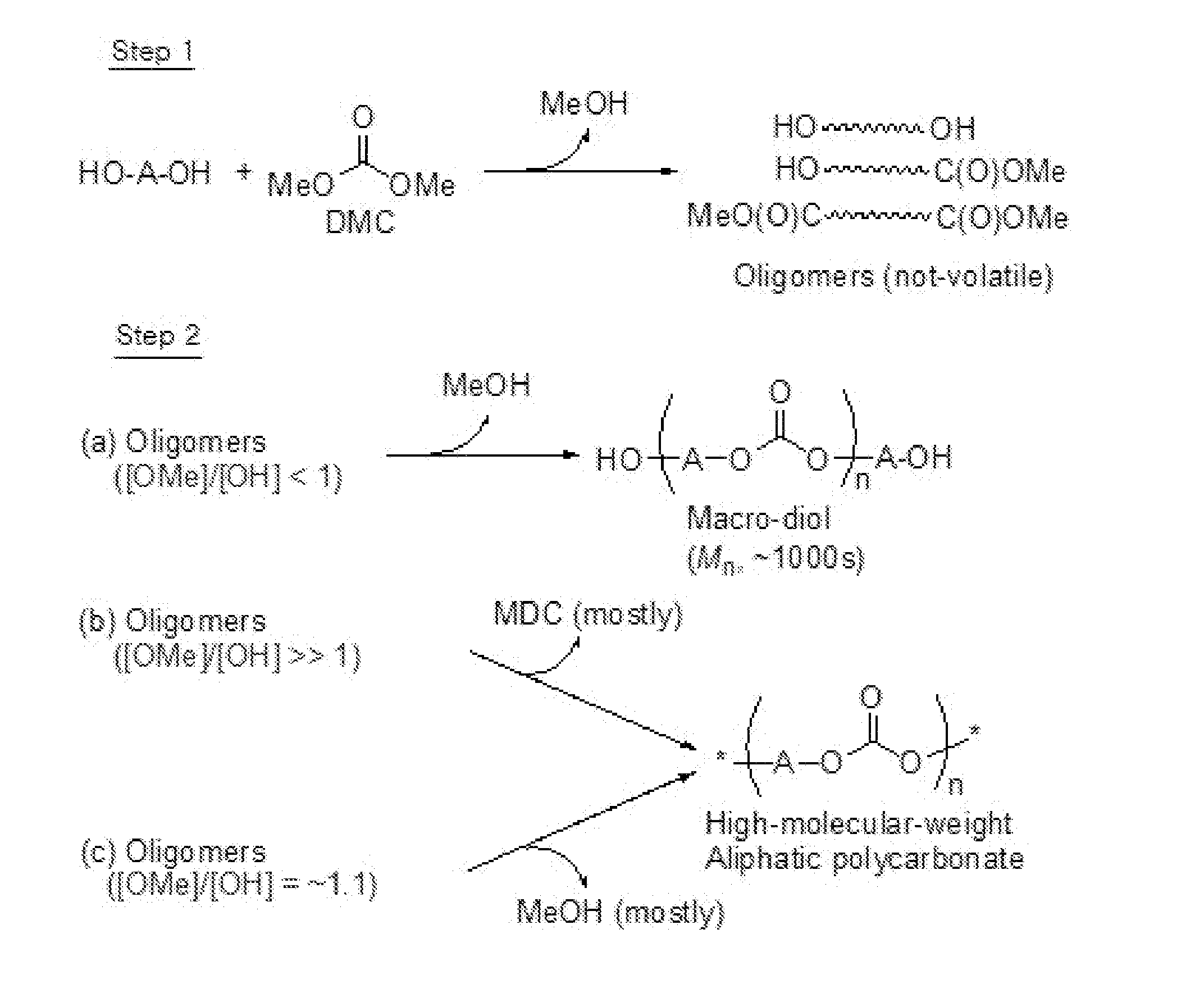Aliphatic polycarbonate with long-chain branches and aromatic copolyester thereof
- Summary
- Abstract
- Description
- Claims
- Application Information
AI Technical Summary
Benefits of technology
Problems solved by technology
Method used
Image
Examples
examples 1-11
Preparation of Aliphatic Polycarbonate-Co-Aromatic Polyesters Having Long-Chain Branches (Condensation Reactions of the Compound of Formulae 1a and the Compounds of 2a to 2d with DMC and Dimethyl Terephthalate)
[0038]Step 1: 1,4-butanediol (Formula 1a, 10.0 g, 110 mmol) and each of the compounds of Formulae 2a to 2d were placed in a three-neck flask and NaOH (0.222 mmol, 0.2 mol %) was added thereto. The compounds of Formulae 2a to 2d were used in amounts of 0.2-0.7 mol %, as shown in Table 1. After further addition of toluene (10 ml), a mechanical stirrer was connected to one neck of the flask, a manifold attached with a vacuum line and a nitrogen line was connected to another neck of the flask, and a Dean-Stark trap was connected to the remaining neck of the flask. After the reaction flask was immersed in a thermostatic bath, water was removed from the mixture by azeotropic distillation with the toluene under reflux. After 2 h, the mixture was allowed to cool to room temperature an...
examples 12-20
Preparation of Aliphatic Polycarbonates Having Long-Chain Branches (Condensation Reactions of the Compound of Formula 1a, the Compounds of Formulae 2a to 2d with DMC)
[0040]Step 1: The procedure of Examples 1-11 was repeated until water was removed from the mixture. Thereafter, the addition of dimethyl terephthalate was omitted, and instead, the amount of DMC was increased to 15.7 g (174 mmol). After the reaction flask was immersed in a thermostatic bath at 120° C., the reaction was carried out for 1 h while distilling off formed methanol and a portion of the DMC at ambient pressure. After heating to 190° C., the reaction was continued while removing volatiles under a reduced pressure of 570 mmHg for 0.5 h, under a reduced pressure 380 mmHg for 1 h, and under a reduced pressure 190 mmHg for 2 h. Thereafter, the reaction was continued for additional 2 h while removing volatiles under a high vacuum of 0.3 mmHg, which was maintained using a vacuum pump. The experimental results are summ...
PUM
| Property | Measurement | Unit |
|---|---|---|
| Time | aaaaa | aaaaa |
| Time | aaaaa | aaaaa |
Abstract
Description
Claims
Application Information
 Login to View More
Login to View More - R&D Engineer
- R&D Manager
- IP Professional
- Industry Leading Data Capabilities
- Powerful AI technology
- Patent DNA Extraction
Browse by: Latest US Patents, China's latest patents, Technical Efficacy Thesaurus, Application Domain, Technology Topic, Popular Technical Reports.
© 2024 PatSnap. All rights reserved.Legal|Privacy policy|Modern Slavery Act Transparency Statement|Sitemap|About US| Contact US: help@patsnap.com










